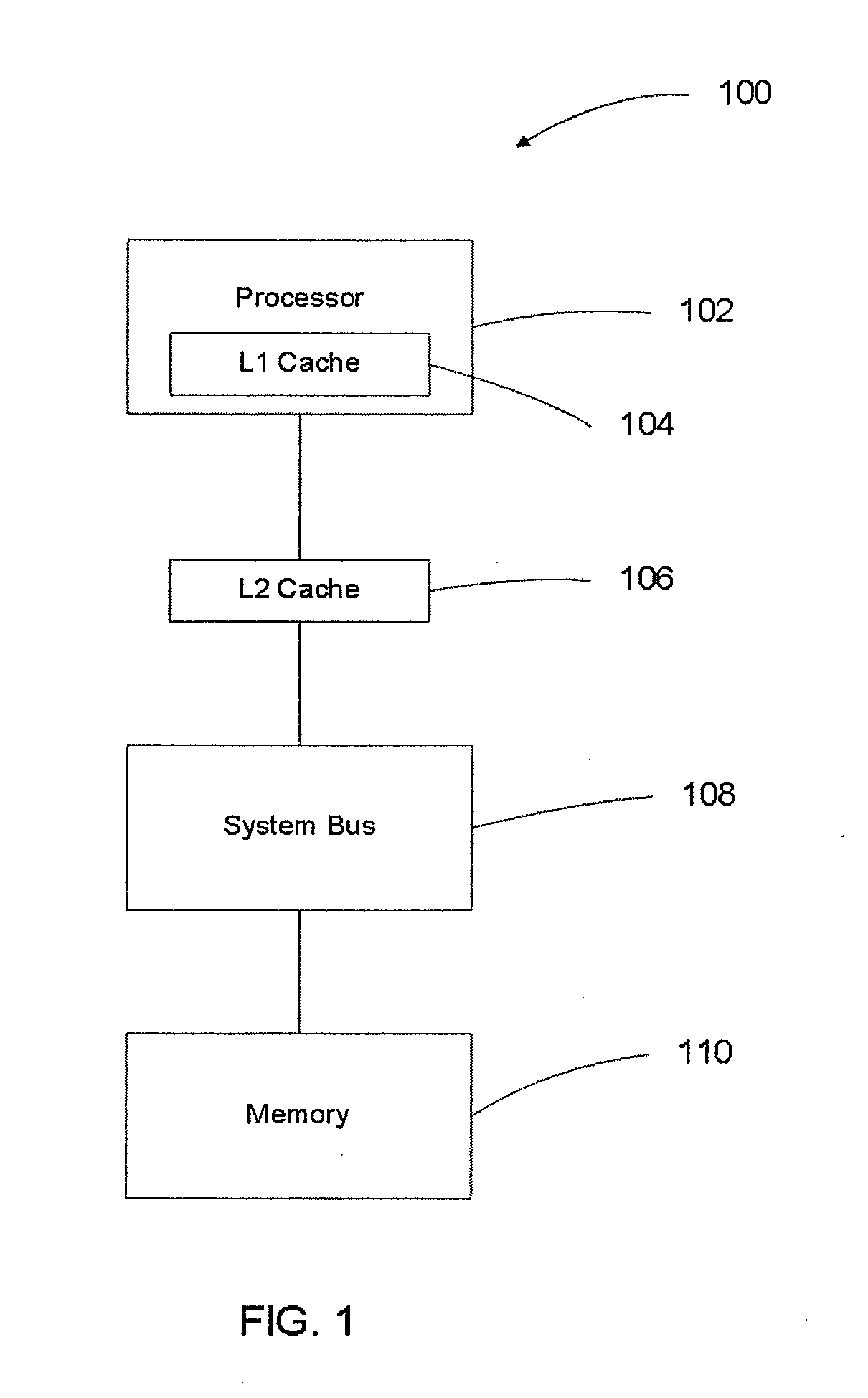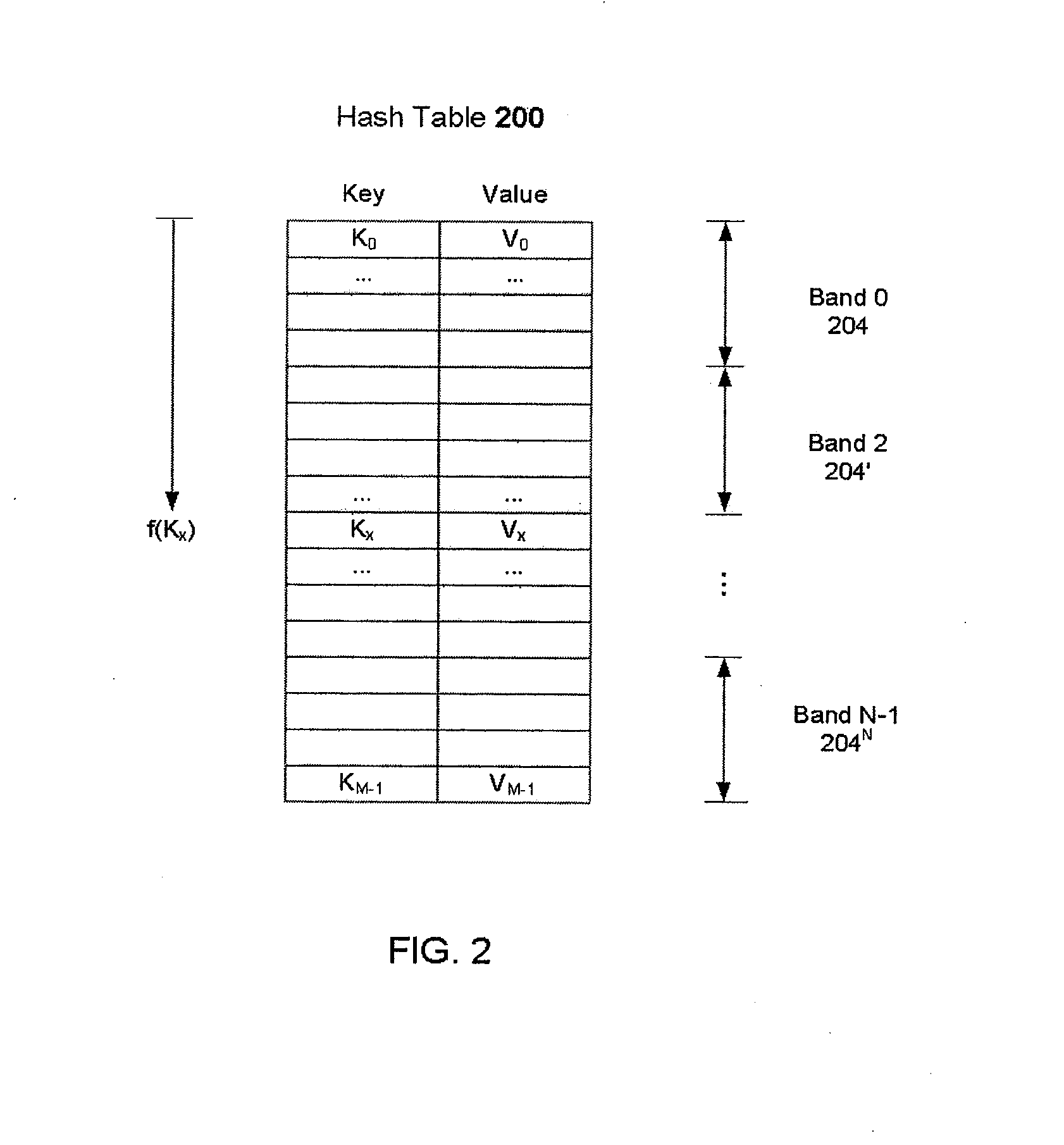Hash table operations with improved cache utilization
a technology of cache utilization and cache utilization, applied in the field of data organizing methods and apparatuses, can solve the problems of amortization of costs, and achieve the effect of reducing memory bandwidth, reducing memory bandwidth, and increasing locality and consequently processor cache utilization
- Summary
- Abstract
- Description
- Claims
- Application Information
AI Technical Summary
Benefits of technology
Problems solved by technology
Method used
Image
Examples
Embodiment Construction
[0035]FIG. 1 shows one example of a computing system 100 suited for use with embodiments of the present invention. A processor 102 executes the instructions of a computer program. The effect of the computer program is to manipulate a hash table stored in the memory 110. A system bus 108 provides the physical means by which data is transferred between the processor 102 and the memory 110.
[0036]To improve the performance of the computing system 100, an L1 cache 104 and L2 cache 106 are typically placed in the data path. These caches 104, 106 improve performance by providing a limited amount of higher performance memory to buffer access to the memory 110. The L1 cache 104 is usually integral to the construction of the processor 102 and consequently has high performance but is constrained to a small size. The L2 cache 106 is usually external to the packaging of the processor 102 and provides buffering that is intermediate in performance and capacity between that of the L1 cache 104 and ...
PUM
 Login to View More
Login to View More Abstract
Description
Claims
Application Information
 Login to View More
Login to View More - R&D
- Intellectual Property
- Life Sciences
- Materials
- Tech Scout
- Unparalleled Data Quality
- Higher Quality Content
- 60% Fewer Hallucinations
Browse by: Latest US Patents, China's latest patents, Technical Efficacy Thesaurus, Application Domain, Technology Topic, Popular Technical Reports.
© 2025 PatSnap. All rights reserved.Legal|Privacy policy|Modern Slavery Act Transparency Statement|Sitemap|About US| Contact US: help@patsnap.com



